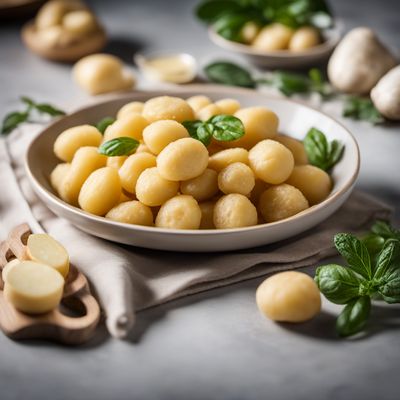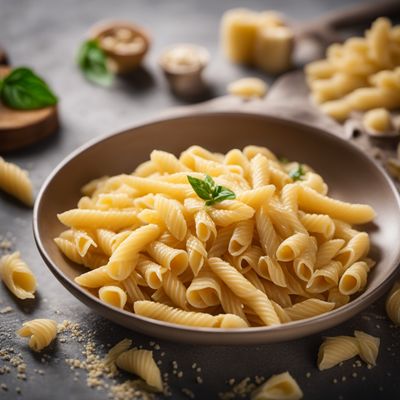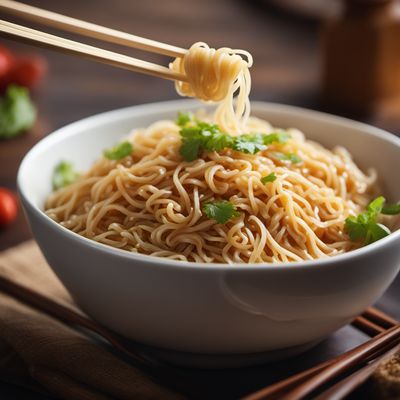
Ingredient
Noodle, rice
The Versatile Grain: Rice Noodles
Rice noodles are thin, translucent noodles made from rice flour and water. They have a delicate, slightly chewy texture and a neutral taste that allows them to take on the flavors of the dish they are cooked in. They come in various shapes and sizes, including flat, thin vermicelli noodles and wide, flat rice noodles. Rice noodles are gluten-free and a popular choice for those with dietary restrictions.
Origins and history
Rice noodles have a long history in Asian cuisine, particularly in China and Southeast Asia. They have been consumed for thousands of years and are an integral part of dishes like Pad Thai, Pho, and Singaporean Laksa. Rice noodles are deeply rooted in the culinary traditions of these regions and have become popular worldwide due to their versatility and gluten-free nature.
Nutritional information
Rice noodles are low in calories and fat, making them a healthy choice for those watching their weight. They are also gluten-free and suitable for individuals with gluten sensitivities or celiac disease. Additionally, rice noodles provide carbohydrates for energy and are a good source of iron.
How to select
When selecting rice noodles, look for packages that are free from any signs of moisture or mold. Opt for noodles that are translucent and have a firm texture. Avoid noodles that appear clumpy or have a strong odor, as these may indicate poor quality or spoilage.
Storage recommendations
To keep rice noodles fresh, store them in a cool, dry place away from direct sunlight. Once opened, transfer any unused noodles to an airtight container or resealable bag to prevent moisture absorption. Use them within a few months for the best quality and texture.
Preparation tips
Rice noodles can be prepared by soaking them in hot water until they become soft and pliable. They can then be stir-fried, added to soups, or used as a base for noodle salads. To prevent them from sticking together, toss them with a little oil after cooking. Rice noodles can also be deep-fried to create crispy noodles for garnishing dishes or as a crunchy topping for salads.
Substitutions
Wheat noodles, such as udon or soba noodles, can be used as substitutes for rice noodles. However, keep in mind that the flavor and texture will differ slightly. Zucchini noodles or spiralized vegetables can also be used as a low-carb alternative for rice noodles in certain dishes.
Culinary uses
Rice noodles are commonly used in dishes like Pad Thai, Pho, and Singaporean Laksa. They can also be stir-fried with vegetables and protein, added to soups, or used in cold noodle salads. Rice noodles are a versatile ingredient that can be incorporated into various Asian and fusion cuisines.
Availability
Rice noodles are widely available in Asian grocery stores and supermarkets. They are commonly cultivated in countries like China, Thailand, Vietnam, and Malaysia.
More ingredients from this category
Recipes using Noodle, rice » Browse all
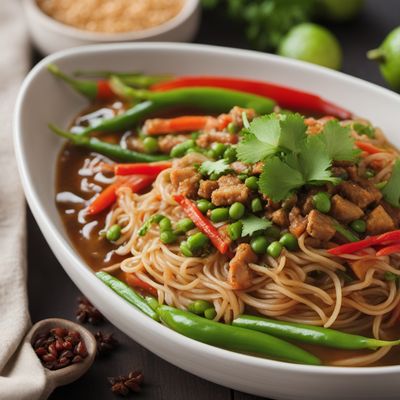
Phat Si-IO with Tofu and Vegetables
Savory Stir-Fried Noodles with Tofu and Veggies
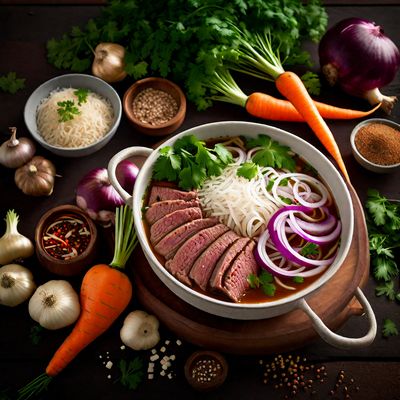
Bosnian-Style Pho
Bosnian-Inspired Beef Noodle Soup: A Hearty Twist on Pho
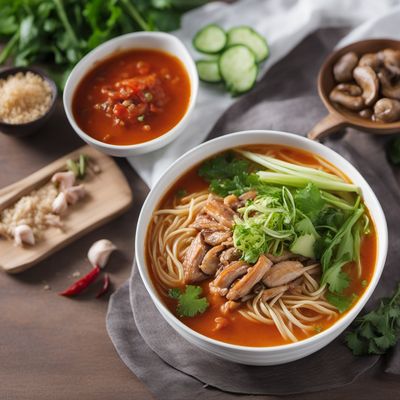
Sarawak Laksa with a Twist
Savory Delight: A Modern Twist on Sarawak Laksa
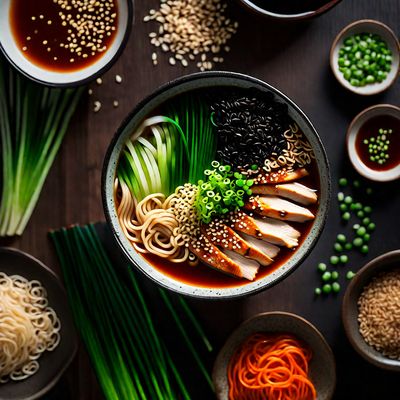
Korean-Style Ramen
Kimchi Ramen: A Spicy Twist on a Japanese Classic
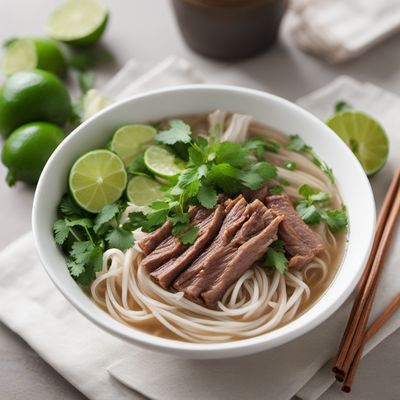
Authentic Vietnamese Beef Phở
Savory Delights: A Taste of Vietnam in a Bowl - Authentic Beef Phở Recipe
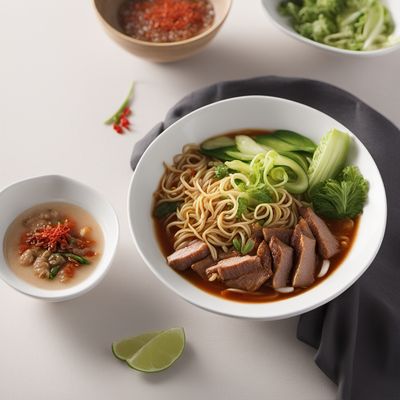
Surinamese-Style Ramen
Savory Surinamese Noodle Delight

Chinese-style Khanom Chin Nam Ya
Savory Chinese Noodles with Fragrant Fish Curry
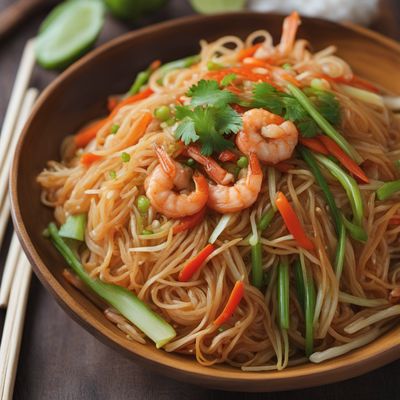
Pancit Lucban with a Twist
Savory Delight: A Modern Twist on Pancit Lucban

Vegetarian Ramen Recipe
Satisfying and Flavorful Vegetarian Ramen
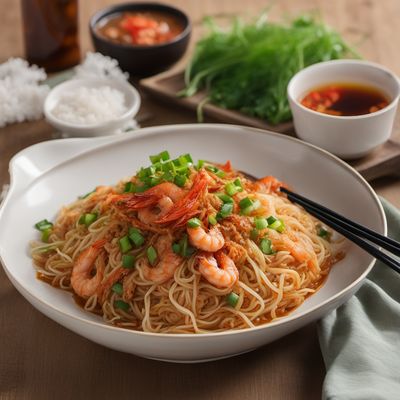
Pancit Palabok with a Twist
Savory Seafood Delight: Pancit Palabok Reinvented
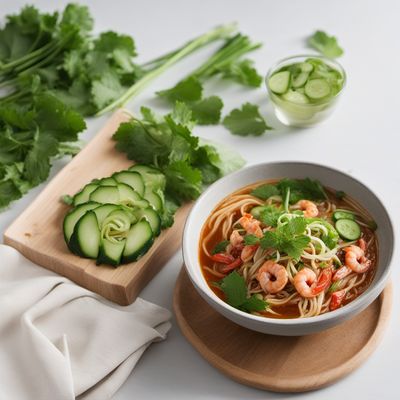
Penang Laksa with a Twist
Spicy and Tangy Penang Laksa Delight

Mauritanian-style Sea Urchin Noodle Soup
Savory Delight: Mauritanian Sea Urchin Noodle Soup
